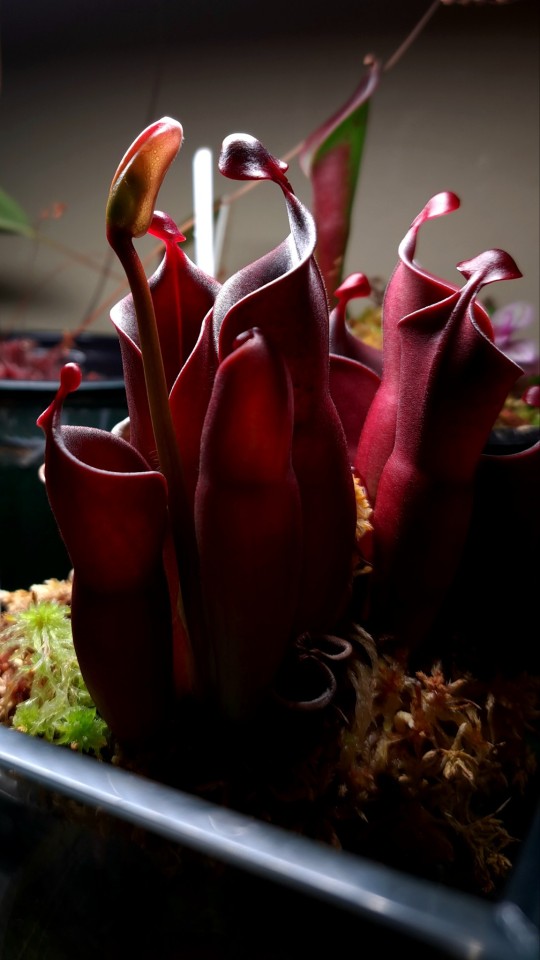#carnivorous plant
Text
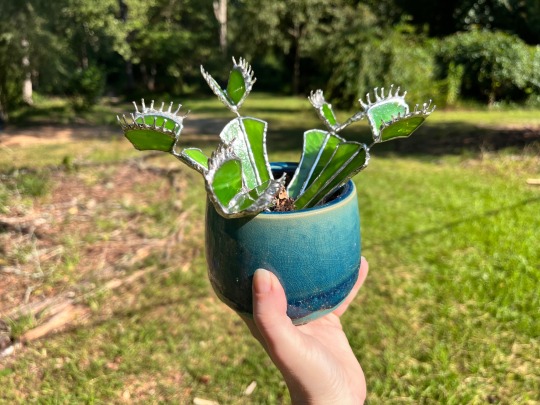
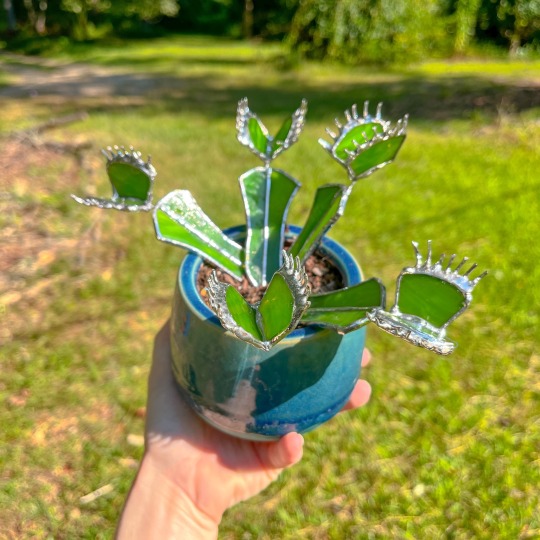
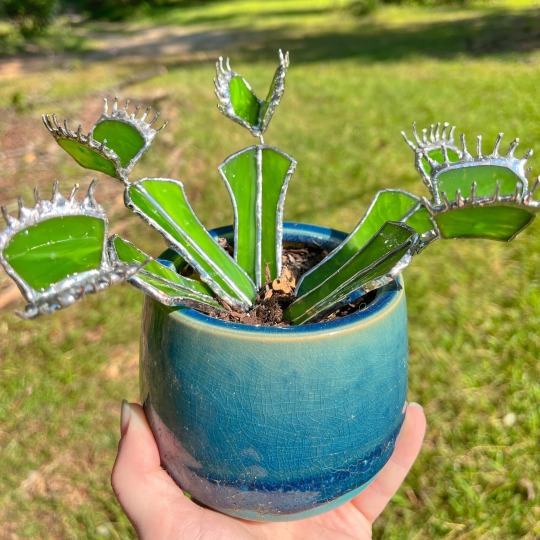

Making these really sucked but mostly because of the teeth on the traps. If I do another I have some other ideas to try & would also vary the sizes of traps. Pretty good for my first stained glass 3D thing! Finally a carnivorous plant I can’t kill.
#art#glass art#stained glass#glass#venus fly trap#venus flytrap#carnivorous plant#carnivorous plants#sculpture#3d#houseplants#palaeo#palaeosinensis#paleo panthera#paleopanthera#green#spooky#Halloween#spooky decor#Halloween decor#witch#potted plants
2K notes
·
View notes
Text
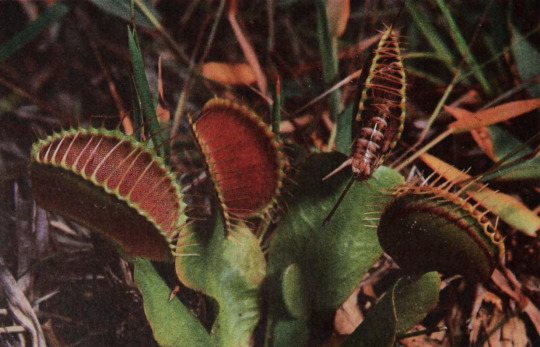
Venus flytrap
By: Unknown photographer
From: Disney’s Wonderful World of Knowledge
1986
#it's an honorary animal :)#carnivorous plant#plant#1986#1980s#Disney’s Wonderful World of Knowledge
614 notes
·
View notes
Text

"Model of a Venus Fly Trap" 1983 - gold , amethyst and diamonds 8h × 8w × 4d in - Designed by John Siddeley made by Grant Macdonald
683 notes
·
View notes
Text

Sarracenias XX; Science Laboratory Building. UC Davis, 03-18-19.
116 notes
·
View notes
Text
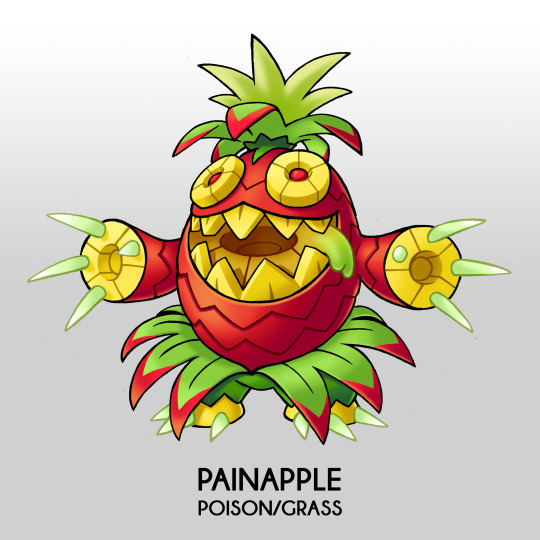
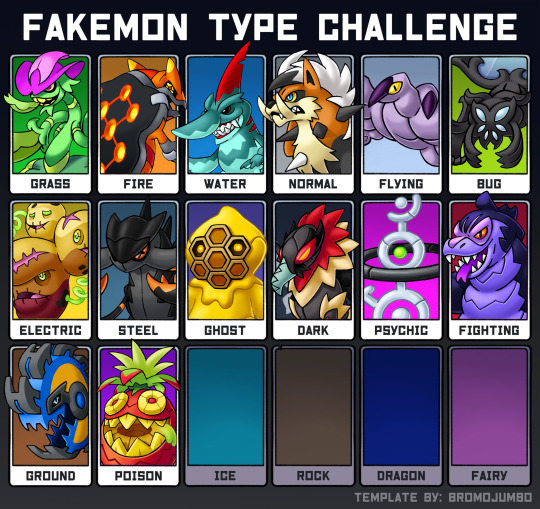
Fakemon Challenge #14 - PAINAPPLE (Poison/Grass) The Carnivorous pokemon
This pokemon is based in Pineapples, more specifically the Red Spanish Pineapple, and the enzyme Bromelain pineapples produce. This enzyme is the one responsible for our mouths to feel weird when eating pineapple, as the enzyme "digests" the outer protein layers on the tongue and palate, leaving them vulnerable to the highly acidic juices of the pineapple. This enzyme is often used as a meat tenderizer.
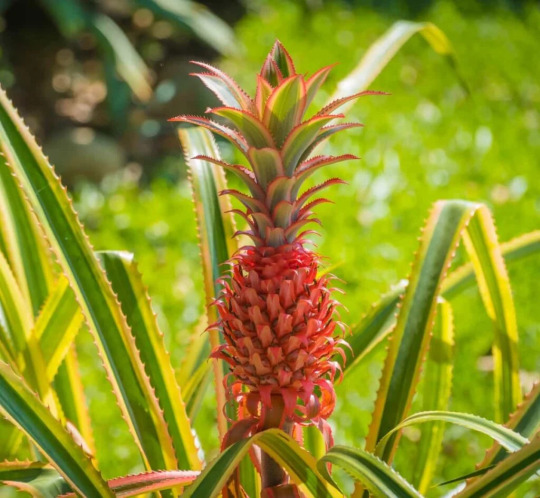
This pokemon, despite is colorful appearence, is a dangerous predator that only eats meat. Their saliva is extremely acidic and allows them to digest their preys whole, bones and all.
They know all the "acid" moves, likes a Acid, Acid Spray and Gastro Acid.
The long white needles in their hands working as claws are a reference to Raphides. Recently people has shared news of scientist finding this needle like structures in pineapples and believing they are the cause of pineapples hurting us when we eat, but this is not true as Raphides can be found in other fruits, like kiwis and grapes, but still I wanted to make the reference.
#pokemon#fakemon#fake pokemon#poison#poison type#poison pokemon#poison fakemon#grass pokemon#grass fakemon#grass#grass type#pineapple#ananas#fruit#carnivorous#carnivorous plant
489 notes
·
View notes
Text


🌱𝗛𝗮𝘂𝗻𝘁𝗲𝗱 𝗛𝗼𝗼𝗸𝘂𝗽𝘀 (𝗡𝗶𝗴𝗵𝘁 𝟮𝟯): Carnivorous Plant 🪴
Previous / Next Part
Bonus spicy🔥 alt
#booghowart#haunted hookups 2023#original characters#freaky delivery 2022#halloween#spooky season#gay#FD! Carnivorous Plant#character design#original character#Carnivorous Plant#Chomper#plants vs zombies#pvz fanart#pvz#audrey 2#little shop of horrors#venus fly trap#fly trap
77 notes
·
View notes
Text

Flask-Shaped Pitcher Plant (Nepenthes ampullaria)
Family: Typical Pitcher Plant Family (Nepenthaceae)
IUCN Conservation Status: Least Concern
Most species of pitcher plants are carnivorous, using jug-like, fluid-filled traps that protrude from their leaves to capture small animals and digest their bodies, absorbing the nutrients released (particularly nitrogen, which is needed to produce chlorophyll and which is scarce in the soil around them due to intense competition with other plants) across the trap's inner walls. The Flask-Shaped Pitcher Plant, however, is unusual among its relatives in that it is seemingly essentially a herbivorous plant - found in damp, dense forests, it grows as a woody vine that creeps along the ground or through the lower branches of larger plants and uses its unusually short, wide pitchers to catch leaves that fall down from the trees above it, digesting them to make use of the nitrogen and other nutrients they contain. Widely distributed across much of Brunai, Indonesia, New Guinea, Malaysia, Thailand and Singapore and reportedly quite common in damp, humid environments throughout their range, members of this species are dioecious (meaning that each individual plant is either "male", producing pollen-producing flowers, or "female", producing pollen-receiving flowers that develop into seeds once pollinated,) and produce dense clusters of small, petal-less flowers relatively high in their "branches", typically far from their traps to avoid accidentally trapping pollinators. Once pollination has occurred, "female" flowers produce numerous tiny, lightweight, hair-like seeds which are carried away from their "mother" on the wind.
----------------------------------------
Image Source: Here
#Flask-shaped pitcher plant#pitcher plant#pitcher plants#nepenthes#carnivorous plant#carnivorous plants#botany#biology#wildlife#plant#plants#Asian wildlife#Nepenthes
95 notes
·
View notes
Text
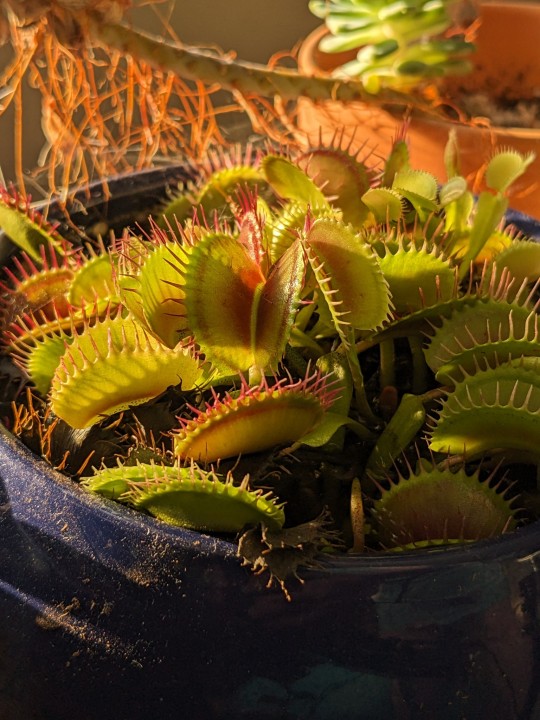
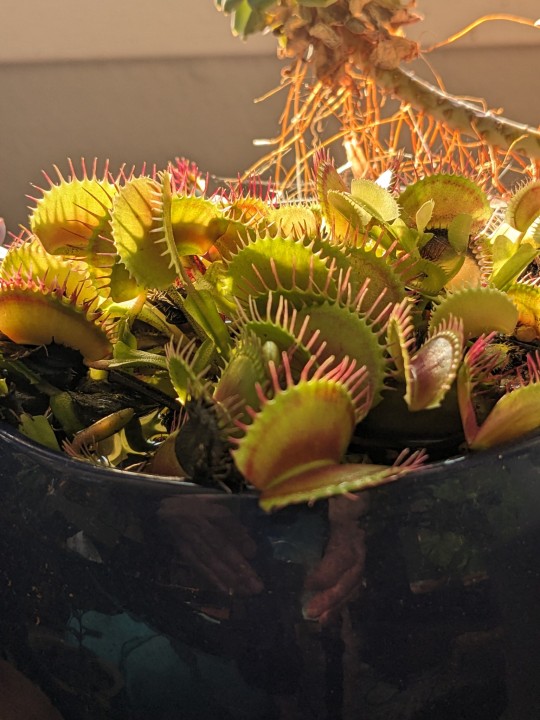

Venus flytrap at dawn. July 2023.
Treehouse Gardens
#venus flytrap#venus fly trap#carnivorous plant#carnivorous plants#plant photography#plant blog#plants#garden#original photographers on tumblr#original photography#plant#dawn
175 notes
·
View notes
Text

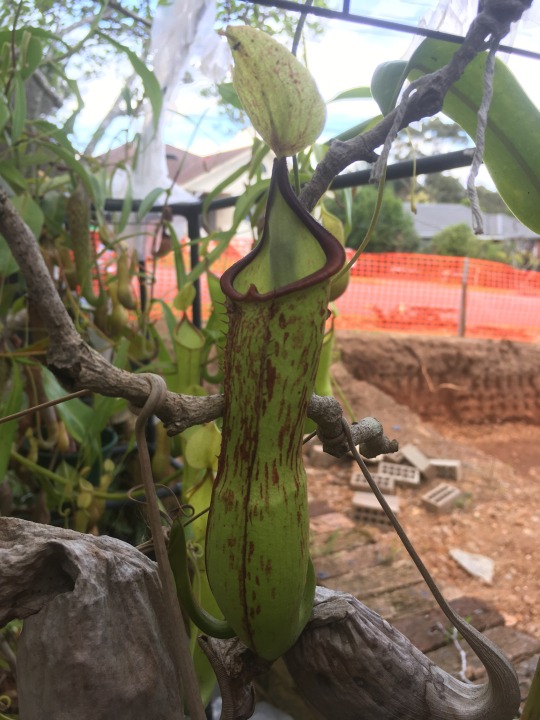

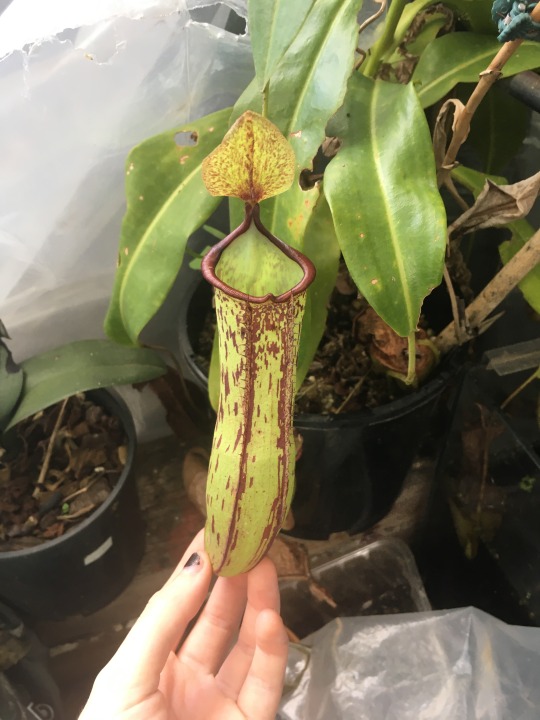
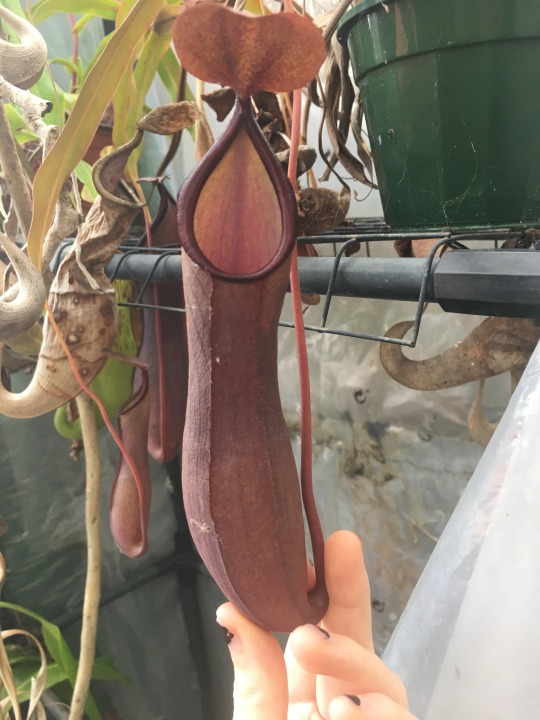

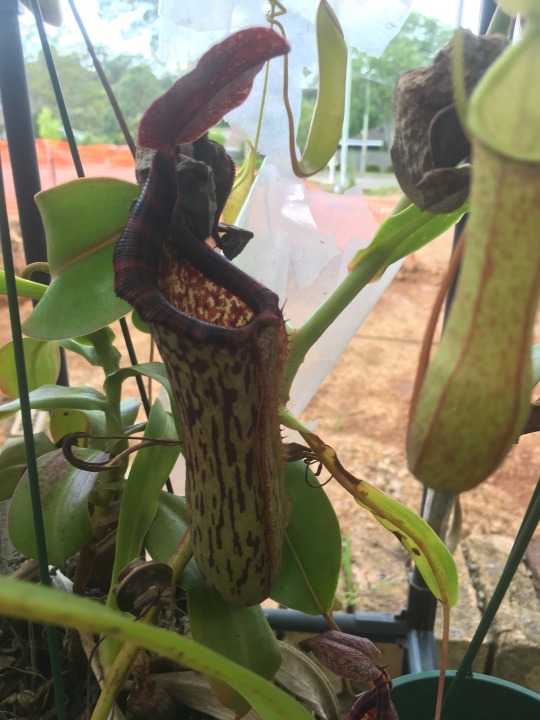

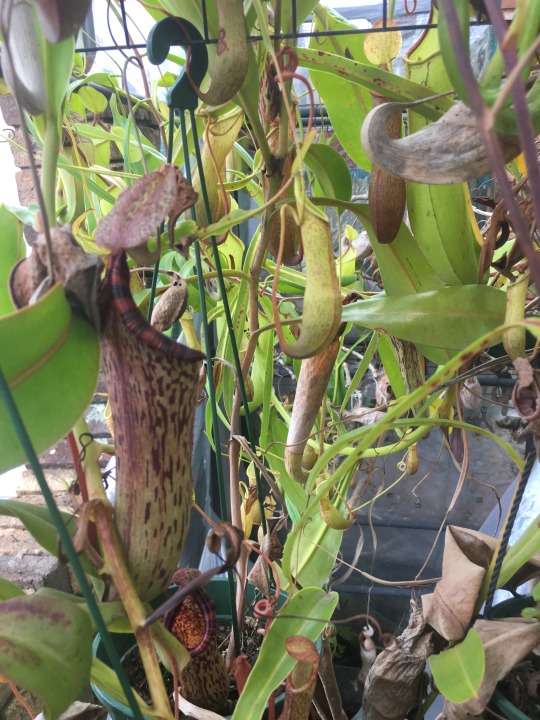




its summer!!! and there is so much new growth on the carnivorous plants in my greenhouse (: (ft. one random orchid)
#carnivorous plants#plantblr#carnivourousplant#carnivorous plant#carnivorousplants#gardening#my plants#pitcher plant#sundews#drosera#nepenthes
108 notes
·
View notes
Photo

Giant pitcher plant
credit: Dr. Alastair Robinson
84 notes
·
View notes
Text


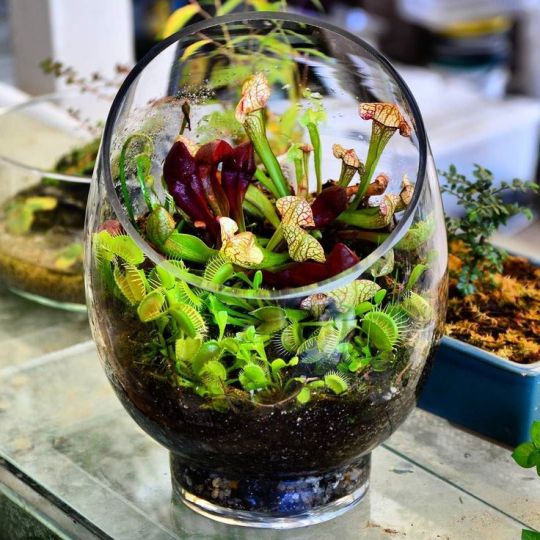
I am in need of a carnivorous plant terrarium right this instant.
#cottagecore#naturecore#nature#witchcore#witchy vibes#cottage witch#green witch#witchblr#carnivorous plants#carnivorous plant#terrarium#bog terrarium#bog#marsh plants#bog plants
113 notes
·
View notes
Text

Flowering carnivorous Drosera sp. in ~2 years post-fire jarrah forest, south-west Australia
📸 @fire-ecology
#fire#fire ecology#plants#botany#plant science#ecology#wildfire#australia#bushfire#op#drosera#carnivorous plant
57 notes
·
View notes
Text


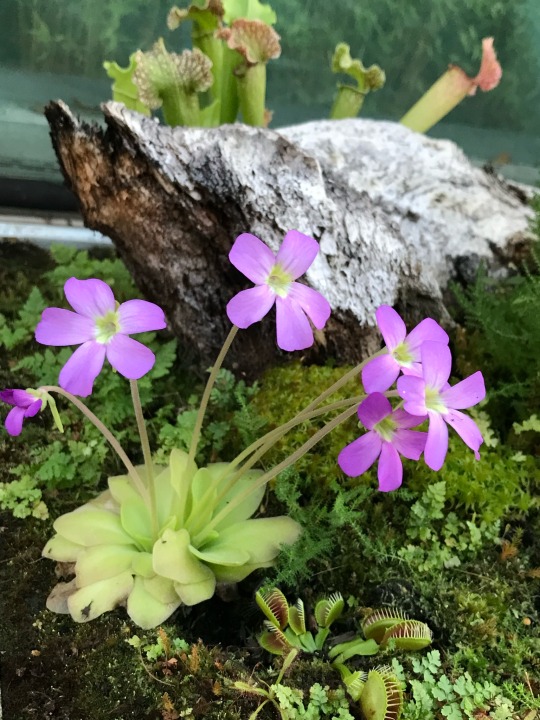


Plant of the Day
Friday 3 February 2023
This bench of carnivorous plants at Duthie Park was grown by the junior members of the Royal Horticultural Society of Aberdeen. These plants grown in acidic conditions and attract, trap and digest animals, mainly insects, for the nutrients they contain. The flowering plant is a Pinguicula species (butterwort) that is an insectivorous perennial producing rosettes of sticky, pale green leaves.
Jill Raggett
#pinguicula#butterwort#carnivorous plant#carnivorousplant#insectivorousplant#childrensgarden#plants#acidicsoil#writtledesign#horticulture#glasshouse#DuthiePark#aberdeen#DavidWelchWinterGarden#scotland
262 notes
·
View notes
Text

Sarracenias V; Science Laboratory Building. UC Davis, 03-18-19.
160 notes
·
View notes
Text

Got a friend for fuit gummy!! Her name is fuit leather. :3
(Pinguicula ‘Johanna’)
82 notes
·
View notes
